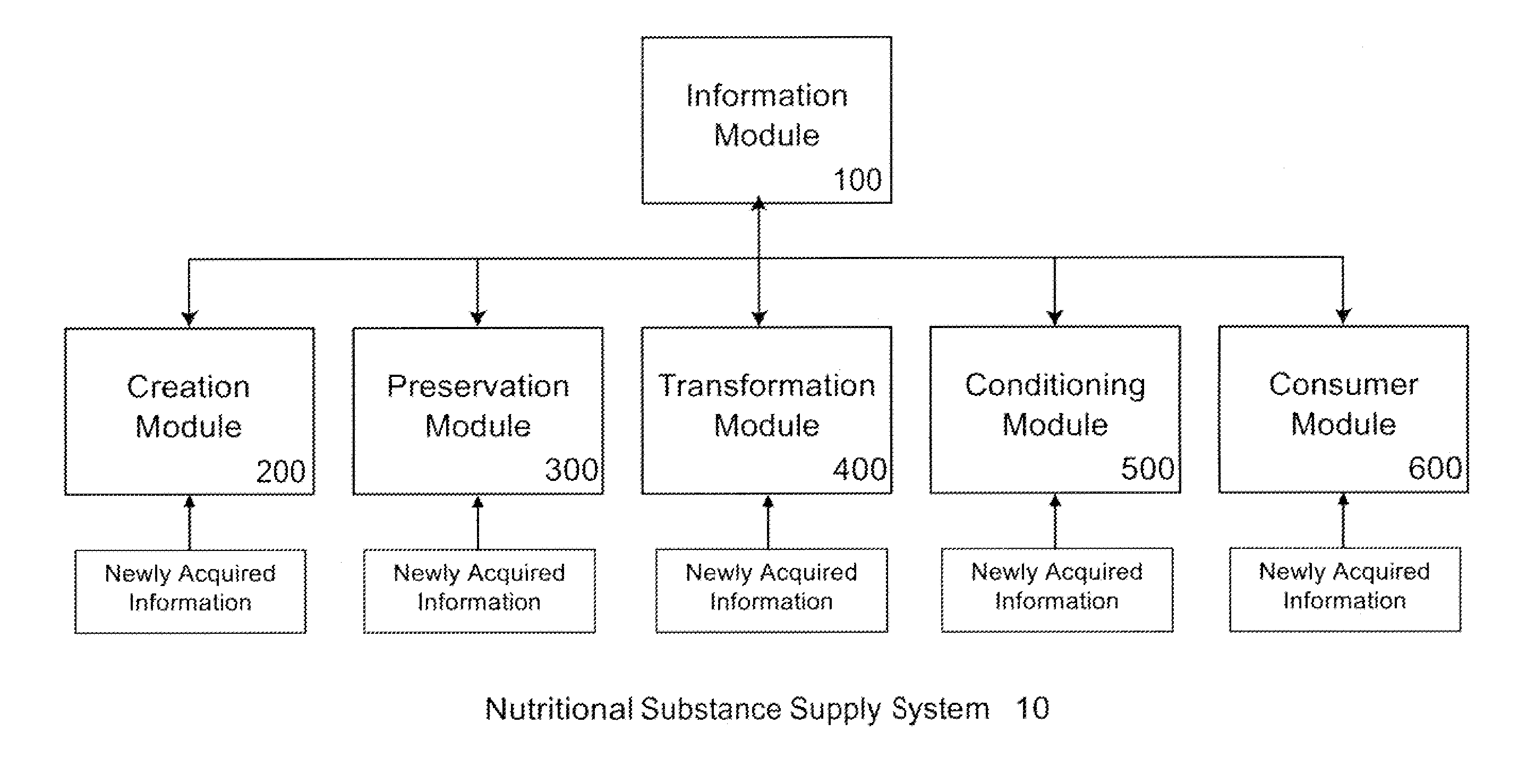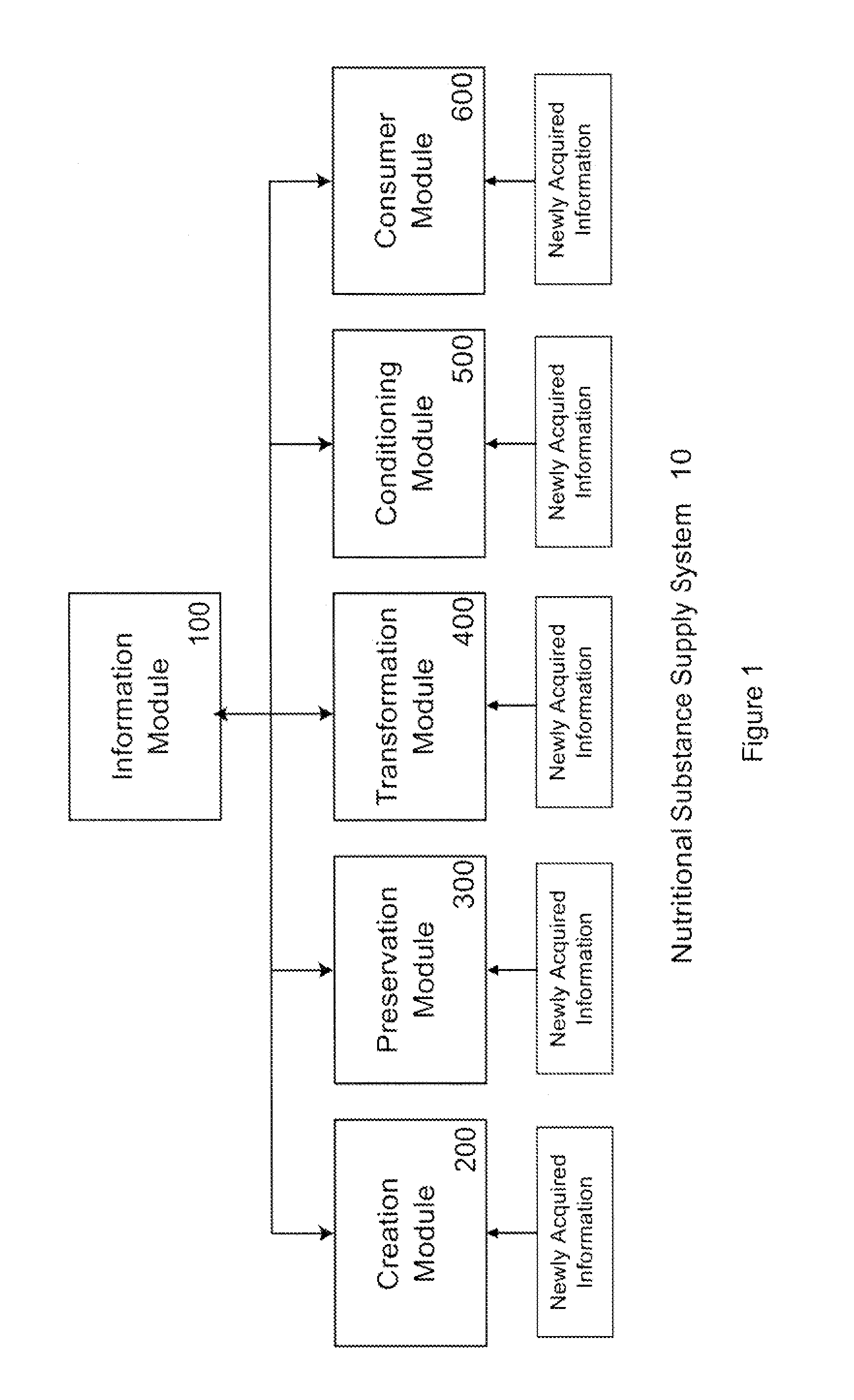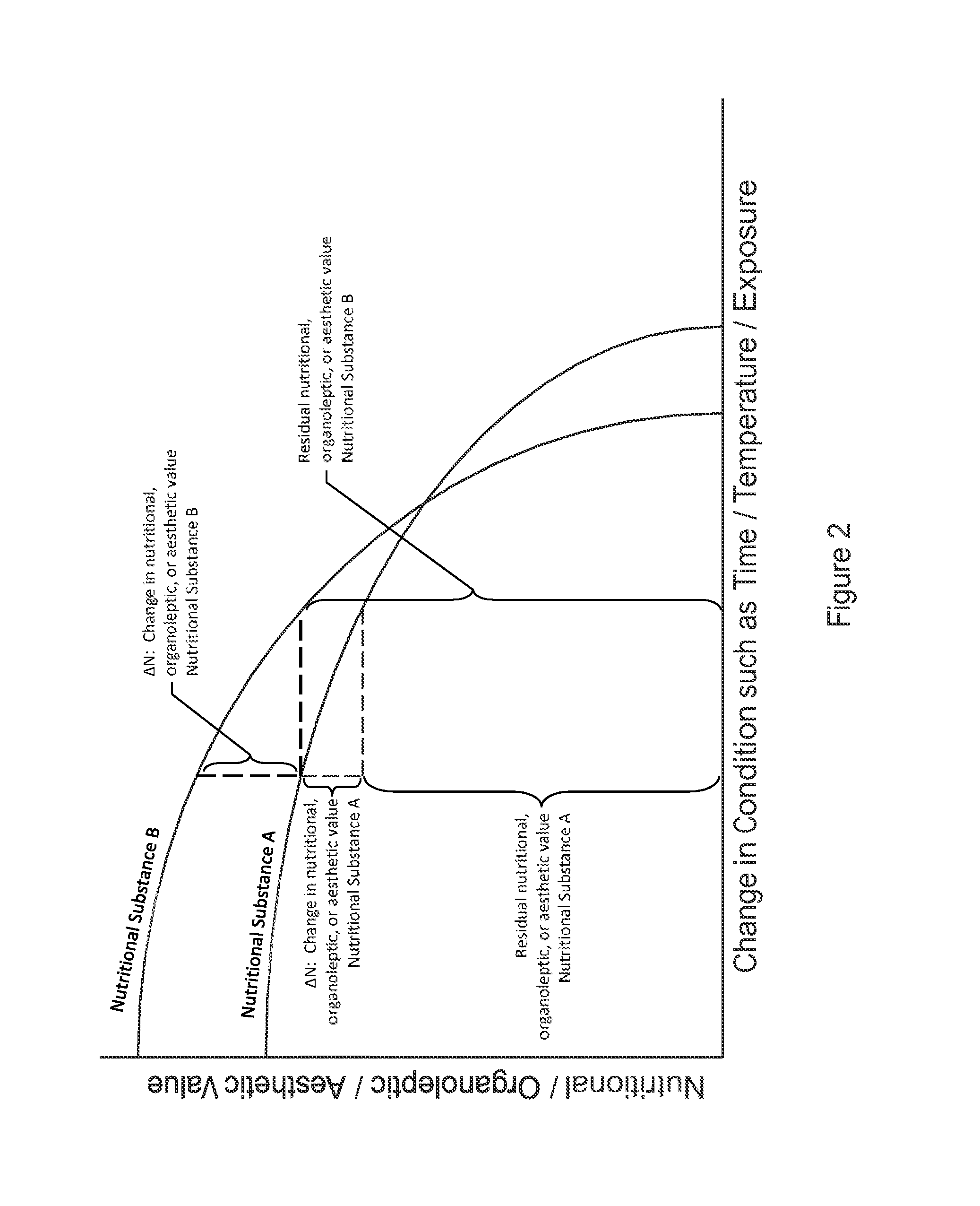While the collectors and creators of nutritional substances generally obtain and / or generate information about the source, history, caloric content and / or
nutritional content of their products, they generally do not pass such information along to the users of their products.
Further, there is no information available to the
consumer regarding changes in nutritional,
organoleptic, or aesthetic values of nutritional substances or regarding residual nutritional,
organoleptic, or aesthetic values of the nutritional substance after they have been conditioned, and no way for the
consumer to know what conditioning protocol will achieve the nutritional,
organoleptic, or aesthetic values he desires.
However, no information is provided to the supermarket regarding baseline nutritional, organoleptic, or aesthetic of the corn, ΔN values occurring prior to
receipt by the
transformer, resulting from transformation, or resulting from logistic transport to the supermarket (i.e. distribution via
truck to the supermarket).
However, no information on baseline nutritional, organoleptic, or aesthetic values, ΔN of such values, or corresponding residual nutritional, organoleptic, or aesthetic values of the ready-to-eat dinner is passed along to the
consumer.
Further, the packaging of the ready-to-eat dinner may only provide the consumer with rudimentary instructions regarding how to cook or reheat the ready-to-eat dinner in a
microwave oven, toaster oven or conventional oven, and only identify that the dinner contains whole kernel corn among the various items in the dinner, preparation by consumer, and finally consumption by the consumer.
The consumer of the dinner will likely not express opinions on the quality of the dinner, unless it was an especially bad experience, where the consumer might contact the producer's
customer support program to complain.
Unfortunately, today consumers have no way to access information regarding the extent to which nutritional substances have changed, the ΔN (typically a degradation), at any moment during their life-cycle.
Accordingly, they cannot determine the actual residual nutritional, organoleptic, or aesthetic values of the nutritional substance.
Further, they have no
access to information regarding how a nutritional substance's nutritional, organoleptic, or aesthetic values will further change (usually a degradation) during local storage and conditioning, and no way to access information regarding how to condition a nutritional substance in order to achieve desired residual nutritional, organoleptic, or aesthetic values.
However, the producer of the ready-to-eat dinner, in the prior example, has very little information to share other than possibly the source of the elements of the ready-to-eat dinner and its
processing steps in preparing the dinner.
Generally, the producer of the ready-to-eat dinner does not know the nutritional content and organoleptic state and aesthetic condition of the product after it has been reheated or cooked by the consumer, cannot predict changes to these properties, ΔN, and cannot inform a consumer of this information to enable the consumer to better meet their needs.
For example, in the
milk supply chain, at least 10% of the milk produced is wasted due to safety margins included in product expiration dates.
Unfortunately, today there is no such system or dynamic nutritional substance labeling.
While grocery stores, restaurants, and all those who process and sell food and beverages may obtain some information from current nutritional substance tracking systems, such as existing non-dynamic nutritional substance labeling, these current systems can provide only limited information.
Nutritional substance collectors and / or producers, such as growers (plants), ranchers (animals) or synthesizer (synthetic compounds), routinely create and collect information about their products, however, that information is generally not accessible by their customers.
Even if such producers wished to provide such information to their customers, there is no current method of labeling, encoding or identifying each particular product to provide such information (even though all plants, animals and in general, nutritional substances have a natural
fingerprint).
While there are limited methods and systems available, they are excessively costly,
time consuming, and do not trace, or provide access to, the nutritional, organoleptic, and / or aesthetic state across the product's lifecycle.
An important issue in the creation, preservation, transformation, conditioning, and consumption of nutritional substances are the changes in nutritional, organoleptic, or aesthetic values, ΔN, that occur in nutritional substances due to a variety of internal and external factors.
Because nutritional substances are composed of biological, organic, and / or chemical compounds, they are generally subject to degradation.
This degradation generally reduces the nutritional, organoleptic, and / or aesthetic values of nutritional substances.
However, being able to consume nutritional substances at the farm, at the slaughterhouse, at the
fishery, or at the
food processing plant is at least inconvenient, if not impossible.
 Login to View More
Login to View More  Login to View More
Login to View More 


